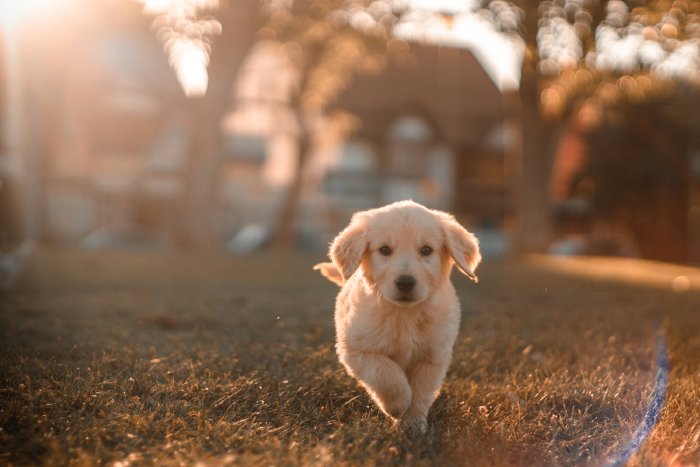Time For Potty Training!
Potty training a new puppy is a crucial part of their early education, ensuring a happy and hygienic home environment.
Here’s a detailed guide to help you through the process.

Step 1: Establish a Routine
- Feeding Schedule: Feed your puppy at consistent times each day. This predictability helps regulate their digestive system, making it easier to anticipate when they’ll need to go.
- Frequent Breaks: Puppies have small bladders and will need to go out frequently. Take them out first thing in the morning, after eating, after naps, and before bedtime.
Step 2: Choose the Potty Area
- Consistent Location: Select a specific area outside where you want your puppy to do their business. Consistency helps your puppy associate this area with going potty.
- Immediate Access: Ensure the potty area is easily accessible. The quicker you can get your puppy there when they need to go, the less likely accidents will occur inside.
Step 3: Supervise Indoors
- Close Watch: Keep a close eye on your puppy while they’re indoors. Look for signs that they need to go, like sniffing, circling, or whining.
- Confinement: When you can’t supervise, consider confining your puppy to a crate or a puppy-proofed area. Puppies naturally avoid soiling their sleeping area, which can help prevent accidents.
Step 4: Positive Reinforcement
- Immediate Praise: As soon as your puppy goes potty in the correct area, immediately offer praise and a treat. This positive reinforcement makes them more likely to repeat the behavior.
- Be Enthusiastic: Use a happy, enthusiastic tone. Your puppy will begin to associate going potty in the right place with positive outcomes.
Step 5: Set a Potty Cue
- Introduce a Command: Start using a consistent phrase or word every time you take your puppy to the potty area. Over time, this cue will help your puppy understand what’s expected when they hear it.
- Consistency: Use the same cue every time and in the same tone of voice to avoid confusing your puppy.
Step 6: Handle Accidents Gracefully
- Stay Calm: If an accident happens, avoid scolding or punishment. This can create fear and confusion, making the training process more difficult.
- Clean Thoroughly: Use an enzymatic cleaner to remove odors that might attract your puppy back to the same spot for a repeat performance.
Step 7: Gradually Increase Freedom
- Monitor Progress: As your puppy becomes more reliable, gradually increase the amount of time and space they have access to indoors.
- Consistent Supervision: Continue to supervise your puppy closely during this transition period to prevent setbacks.
Step 8: Be Patient and Consistent
- Patience is Key: Potty training takes time. Expect some accidents and setbacks along the way, but remain patient and consistent in your approach.
- Consistency: Maintain the routine, even as your puppy starts to show progress. Consistency reinforces the training.
Additional Tips:
- Reward Good Behavior: Always reward your puppy immediately after they go potty in the correct place to reinforce the behavior.
- Avoid Punishment: Punishing your puppy for accidents can lead to anxiety and fear, which can actually hinder the training process.
- Understand Your Puppy’s Limitations: Remember that puppies have limited bladder control. Expect to take them out frequently and gradually extend the time between breaks as they grow.
Potty training is a foundational aspect of raising a well-adjusted puppy.
By following this guide and adjusting based on your puppy’s individual needs and progress, you’ll set the stage for a lifelong habit of cleanliness and discipline.